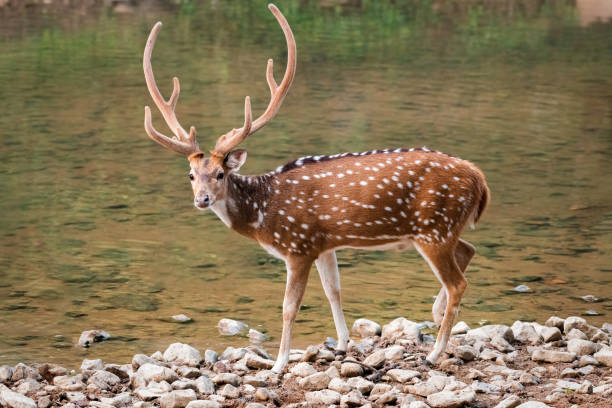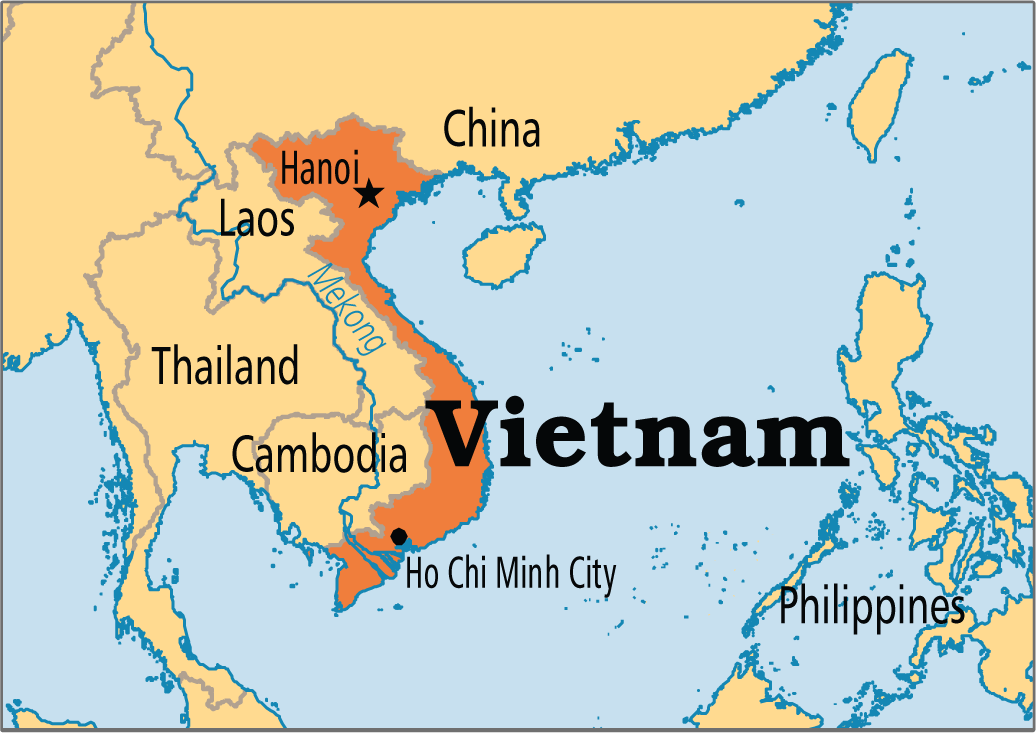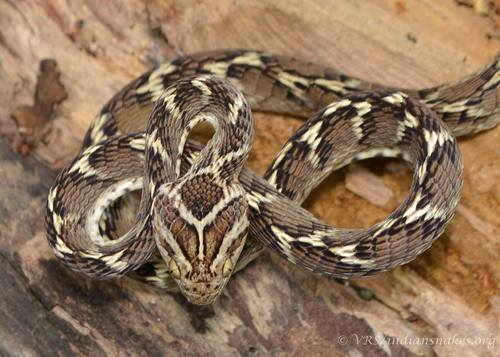Rajasthan Switch to Hindi
New Tiger Reserve in Rajasthan
Why in News?
An expert committee advised urgent habitat conservation and prey base development before declaring Kumbhalgarh-Todgarh Raoli sanctuary as a Tiger Reserve.
- The Union government and National Tiger Conservation Authority provided in-principle approval in August 2023. The committee will continue to define core and buffer areas to safeguard biodiversity.
Key Points
- Committee’s Recommendation:
- Habitat Limitations:
- The current area lacks the capacity to support a sustainable tiger population. The report suggests adding more areas to the proposed reserve.
- Village Relocation:
- A strategic, voluntary relocation plan for sparsely populated villages within the proposed reserve area is recommended to secure undisturbed habitats and enhance villagers’ quality of life through sustainable resettlement.
- Invasive Species Control:
- Removing invasive weeds and planting native, palatable grasses are essential to restore suitable habitats for wild herbivores and promote biodiversity.
- Prey Base Development:
- Relocating 1,000–2,000 spotted deer (chital) is recommended to boost prey availability, benefiting the population of predators.
- Anti-Poaching and Infrastructure:
- Strengthening anti-poaching measures, wireless communications, and patrol roads is necessary.
- Geographic Scope:
- The Kumbhalgarh Tiger Reserve would span approximately 1,397 sq km across Rajsamand, Udaipur, Pali, Ajmer, and Sirohi districts in Rajasthan.
- Habitat Limitations:
Spotted Deer (Chital)
- The chital, also known as the spotted deer or axis deer, is a graceful and elegant herbivore native to the grasslands and forests of India and Sri Lanka.
- They prefer open grasslands, savannas, and lightly forested areas.
- IUCN Red list: Least Concern
- Wildlife Protection Act, 1972: Schedule II.
Haryana Switch to Hindi
VINBAX 2024
Why in News?
The 5th Vietnam-India Bilateral Army Exercise, "VINBAX 2024" commenced at Ambala, Haryana.
Key Points
- About VINBAX 2024:
- Expanded Scope with Bi-Service Participation:
- For the first time, the exercise includes personnel from both Army and Air Force of India and Vietnam, increasing the scope of the exercise.
- Objective:
- The exercise aims to build joint military capability, focusing on deployment of Engineer and Medical teams for United Nations Peacekeeping Operations under Chapter VII.
- Validation Exercise:
- A 48-hour validation exercise, including a Humanitarian Assistance & Disaster Relief (HADR) demonstration and equipment display, will evaluate the contingents’ technical capabilities under UN mission scenarios.
- Cultural Exchange:
- The exercise also serves as a platform for troops from both nations to learn about each other’s social and cultural heritage.
- Expanded Scope with Bi-Service Participation:
- India and Vietnam:
- Both countries share a Comprehensive Strategic Partnership and defence cooperation is a key pillar of this partnership. Vietnam is an important partner in India’s Act East policy and the Indo-Pacific vision.
United Nations Peacekeeping
- UN Peacekeeping refers to the activities carried out by the United Nations (UN) to help maintain or restore international peace and security in conflict-affected areas.
- Established to respond to the complex nature of conflicts and to support countries in transition from conflict to peace,
- UN Peacekeeping operates under the principles of consent, impartiality, and non-use of force, except in self-defense and defense of the mandate
- Although the majority of peacekeepers are military or police, approximately 14% are civilians.
Bihar Switch to Hindi
Cat Snake Spotted in Valmiki Tiger Reserve
Why in News?
The common cat snake (Boiga trigonata), a rare and minimally venomous species, was recently discovered in Bihar’s Valmiki Tiger Reserve.
Key Points
- About Common Cat Snake:
- Also known as Indian gamma snake, the common cat snake is a species of rear-fanged snake endemic to South Asia.
- Features:
- Thin, long body with smooth, non-glossy scales.
- Greyish-brown dorsal with light zig-zag patterns; whitish belly with tiny spots.
- Triangular head with a distinct Y-pattern on top.
- Large golden eyes with vertical pupils.
- Habitat:
- Found widely across the Indian Subcontinent.
- Inhabits dense and open forests, rocky hills, and scrub jungles.
- Hides in tree holes, crevices, and dense vegetation at low to moderate heights.
- Venom Characteristics:
- Mildly venomous, the snake poses no significant threat to humans but impacts small animals.
- Lifespan: 12-20 years
- Diet: It primarily consists of small vertebrates.
- IUCN Red List: Least Concern.
Valmiki Tiger Reserve (VTR)
- The VTR is located in Bihar’s West Champaran district, bordering Nepal to its north and Uttar Pradesh to its west. It is the only tiger reserve in Bihar.
- Situated in the Gangetic plains bio-geographic region, the vegetation of this Tiger Reserve is a combination of Bhabar and Terai regions.
- Wild mammals include tiger, sloth bear, leopard, wild dog, bison, wild boar etc.
- Rivers Gandak, Pandai, Manor, Harha, Masan and Bhapsa flow through various parts of the reserve.
Bihar Switch to Hindi
Maithili Missed Classical Status
Why in News?
According to the sources, Maithili was not granted classical status, despite recurring demands, as the Bihar government did not formally submit the proposal.
Key Points
- Recommendation Process:
- Classical status for languages is recommended by a Linguistics Expert Committee with representatives from the Ministry of Home Affairs and the Ministry of Culture, chaired by the Sahitya Akademi president.
- After the committee’s recommendation, Union Cabinet approval and a gazette notification are required.
- Maithili Proposal Technicality:
- Although the Maithili Sahitya Sansthan in Patna prepared a proposal for Maithili’s classical status, the Bihar government did not forward it to the Union Home Ministry as required.
- Cultural and Linguistic Importance of Maithili:
- According to the 2011 census, India has approximately 12 million Maithili speakers.
- Recognized in the Eighth Schedule since 2003, Maithili is an optional subject in the Union Public Service Commission exam and has official language status in Jharkhand as of 2018. It is widely spoken in Bihar, Jharkhand, and Nepal.
- Political Advocacy for Maithili’s Status:
- The Janata Dal (United) has consistently supported Maithili’s classical status.
- Maithili’s 1,300-year literary heritage and ongoing evolution are highlighted as grounds for its classical status.
- Recent Classical Language Recognitions:
- In October 2024, Assamese, Bengali, and three other languages were granted classical status, following proposals from respective state governments.
- Previously, Sanskrit, Pali, and Prakrit were considered by the committee, with only Sanskrit recognized in 2005.
- Benefits of Attaining Classical Language Status:
- Recognized classical languages receive Ministry of Education support, including two annual awards to honor distinguished scholars.
- A Centre of Excellence is established for dedicated studies, and professional academic chairs are set up at central universities.
Maithili Language
- Maithili is a language spoken in Bihar belonging to the eastern sub-group of the Indo-Aryan branch. Bhojpuri and Magadhi are closely related to the language.
- The language is claimed to have developed from the Magadhan Prakrit.
- It was the literary language of all of eastern India during the medieval period.
- It was popularised in the 14th century by poet Vidyapati and solidified the importance of the language in literature.
- Maithili language has been accorded Constitutional status in 2003 and it became one of the 22 languages mentioned in the 8th Schedule of the Constitution.
Jammu & Kashmir Switch to Hindi
Survival Threat to Markhor
Why in News?
Markhor, the largest wild goat in the world, is battling for survival in Jammu and Kashmir. It is known for its thick fur, flowing beard and corkscrew horns.
Key Points
- Legal Protection and Species Status:
- Markhor, scientifically known as Capra falconeri, is classified as "Near Threatened" by the IUCN and protected under Schedule I of India’s Wildlife Protection Act, 1972.
- Threats to Survival:
- Primary threats include habitat loss from fencing, illegal grazing, poaching, and encroachment. Climate change is also affecting food resources, driving Markhor closer to human settlements.
- Global Recognition and Initiatives:
- Recognizing its ecological importance, the UN General Assembly designated 24th May as the International Day of the Markhor to encourage conservation efforts.
- Significance as a Flagship Species:
- Markhor serves as a flagship species for conservation in J&K, helping protect other regional wildlife, such as Musk Deer and Brown Bear.
- Distribution and Habitat:
- The endangered Markhor inhabits moist to semi-arid mountain regions across Pakistan, India (Jammu & Kashmir), Afghanistan, Uzbekistan, Turkmenistan, and Tajikistan.
- In J&K, it’s found in areas like Shopian, the Pir Panjal range, and Kazinag Uri, but its population is fragmented due to human interference and habitat loss from projects like the Mughal Road.
- Impact of Mughal Road and Conservation Measures:
- The construction of Mughal Road, despite wildlife department opposition, disrupted Markhor habitats.
- Following a Supreme Court directive, 5% of the road’s project cost was allocated for Markhor habitat restoration.
- Markhor Recovery Program:
- Initiated in 2004 by the Wildlife Trust of India (WTI) and the Wildlife Department, the program focuses on fencing sanctuaries, tracking habitat usage, and studying competition between Markhor and livestock.
- Community Involvement and Awareness:
- The Wildlife Department collaborates with Gujjar and Bakerwal herders to educate them on conservation practices, especially in areas with livestock that compete with Markhor for space and resources.
- Government Support and Directives:
- The Forest and Environment Minister recently urged the Wildlife Department to assess the impact of human activities on Markhor habitats, emphasizing soil conservation and afforestation efforts.
- Need for Global Collaboration:
- Conservation efforts call for international expertise and local engagement to boost Markhor populations and preserve this unique species for future generations.




%20MPPCS%202025%20Desktop%20E.jpg)
%20MPPCS%202025%20Mobile%20E%20(1).jpg)






.png)
.png)











 PCS Parikshan
PCS Parikshan







